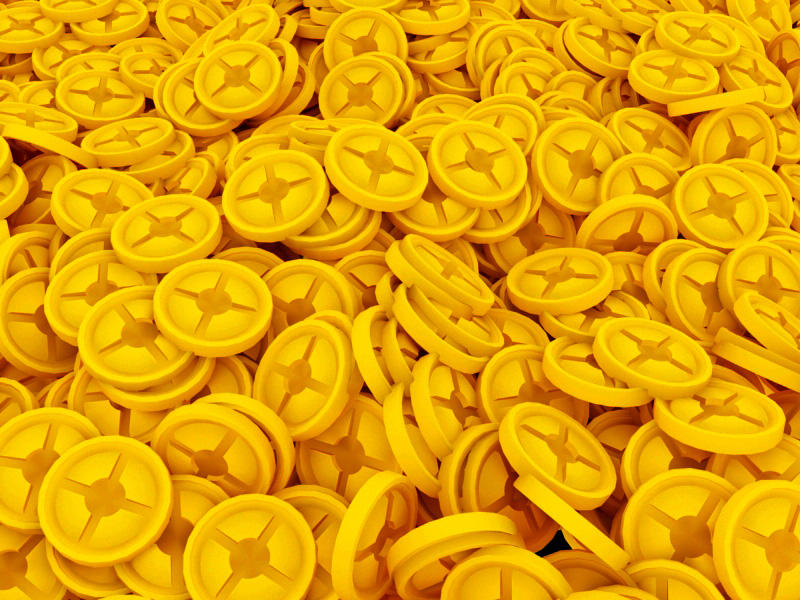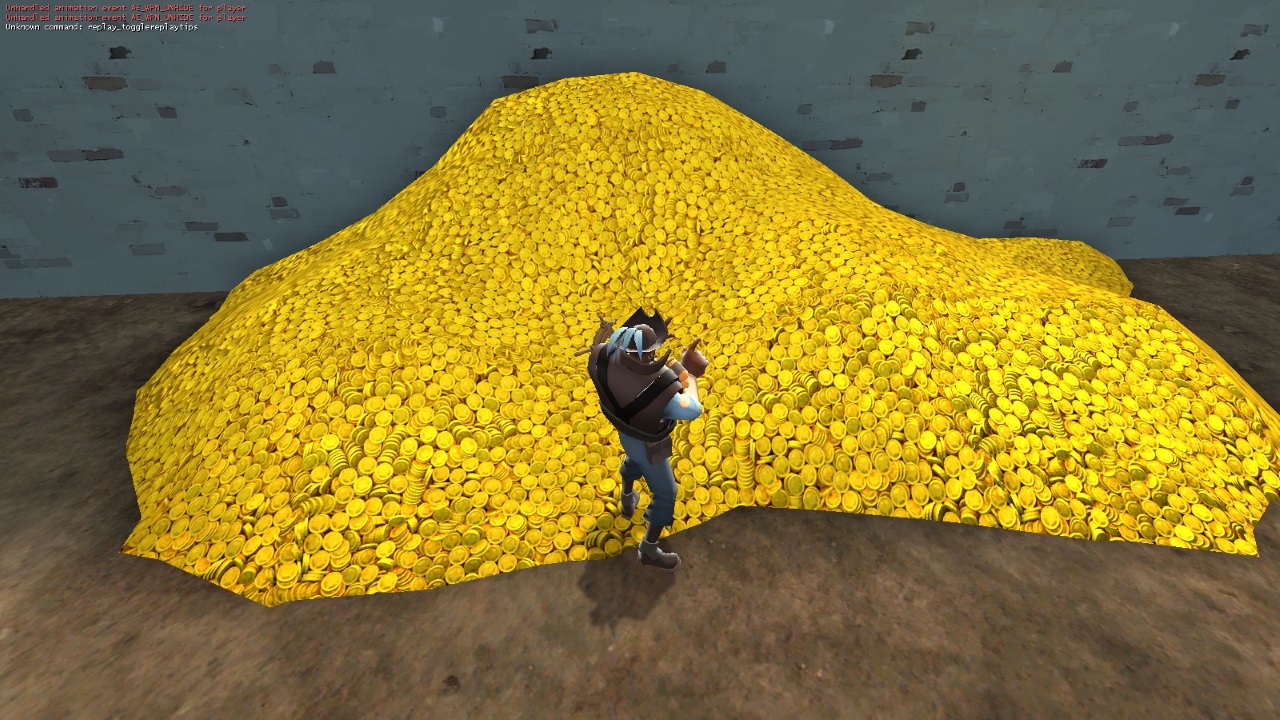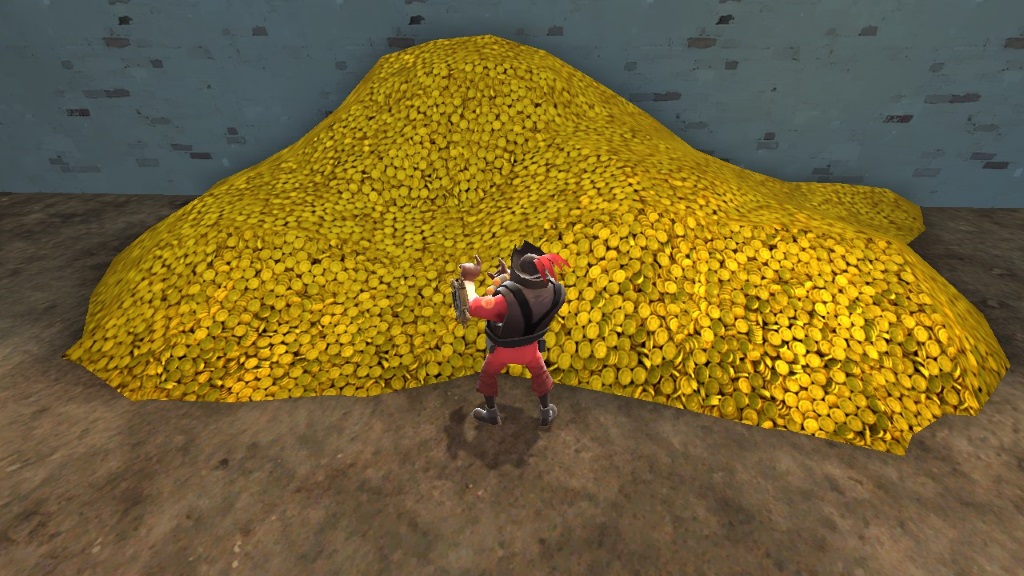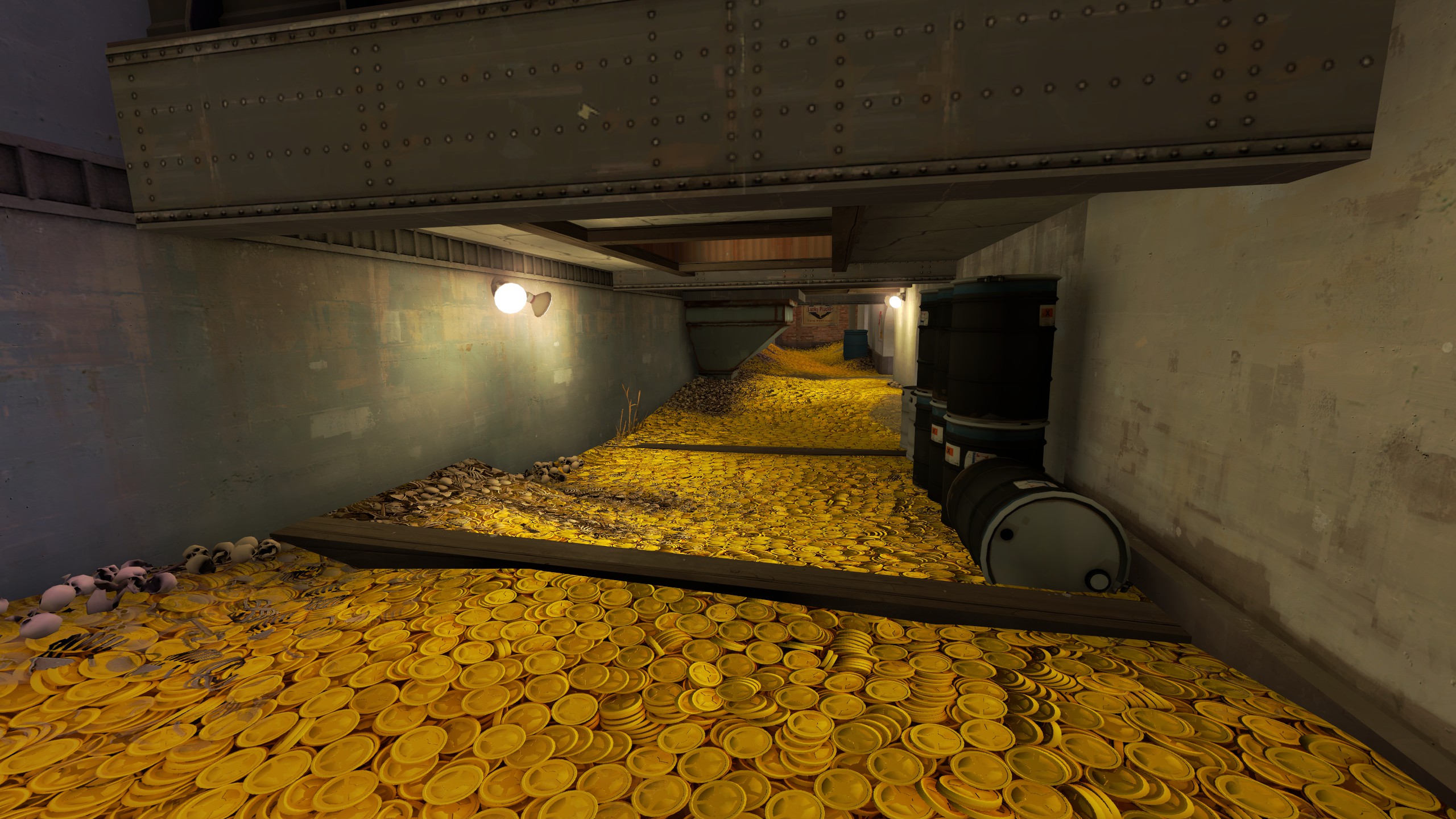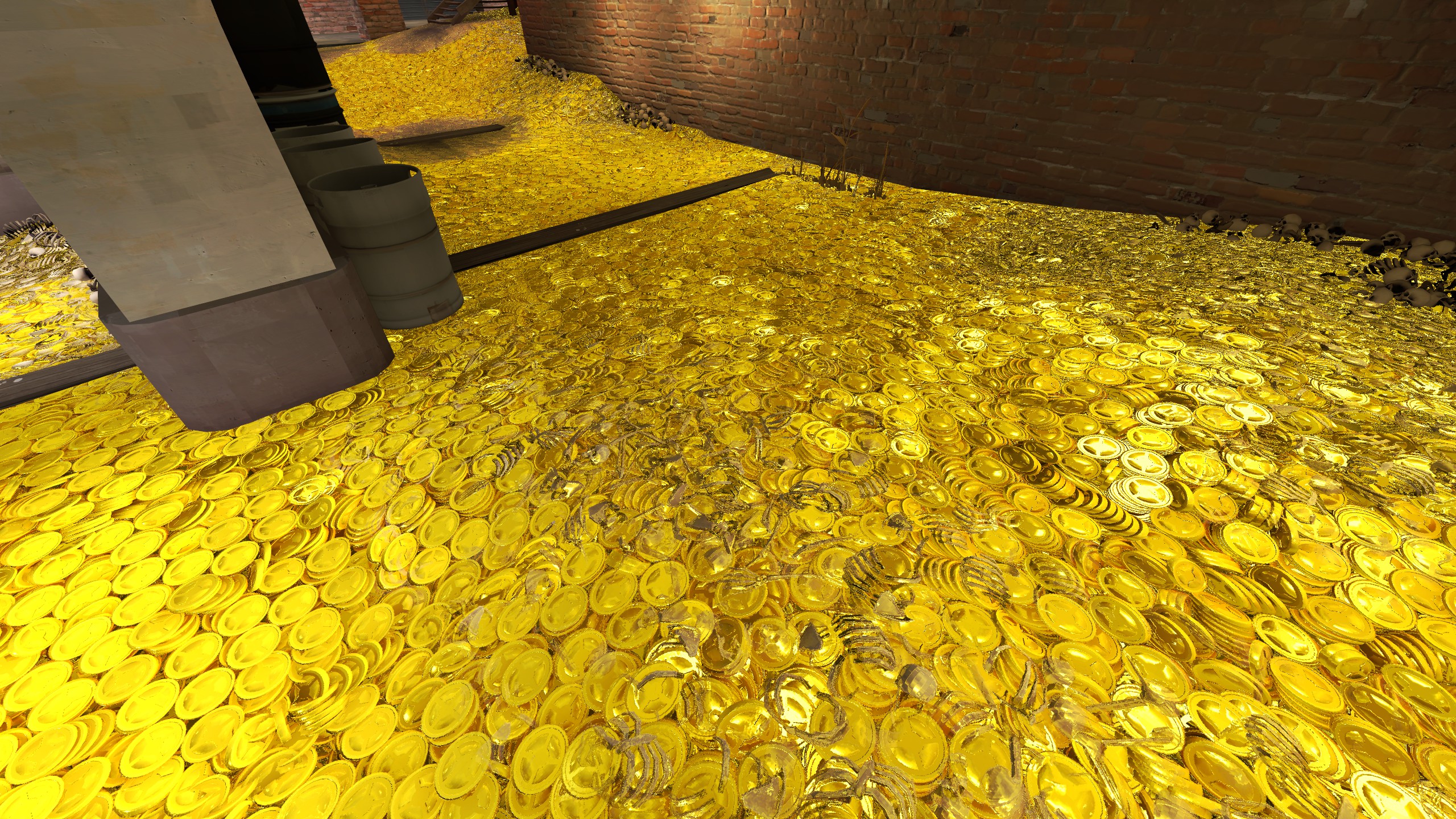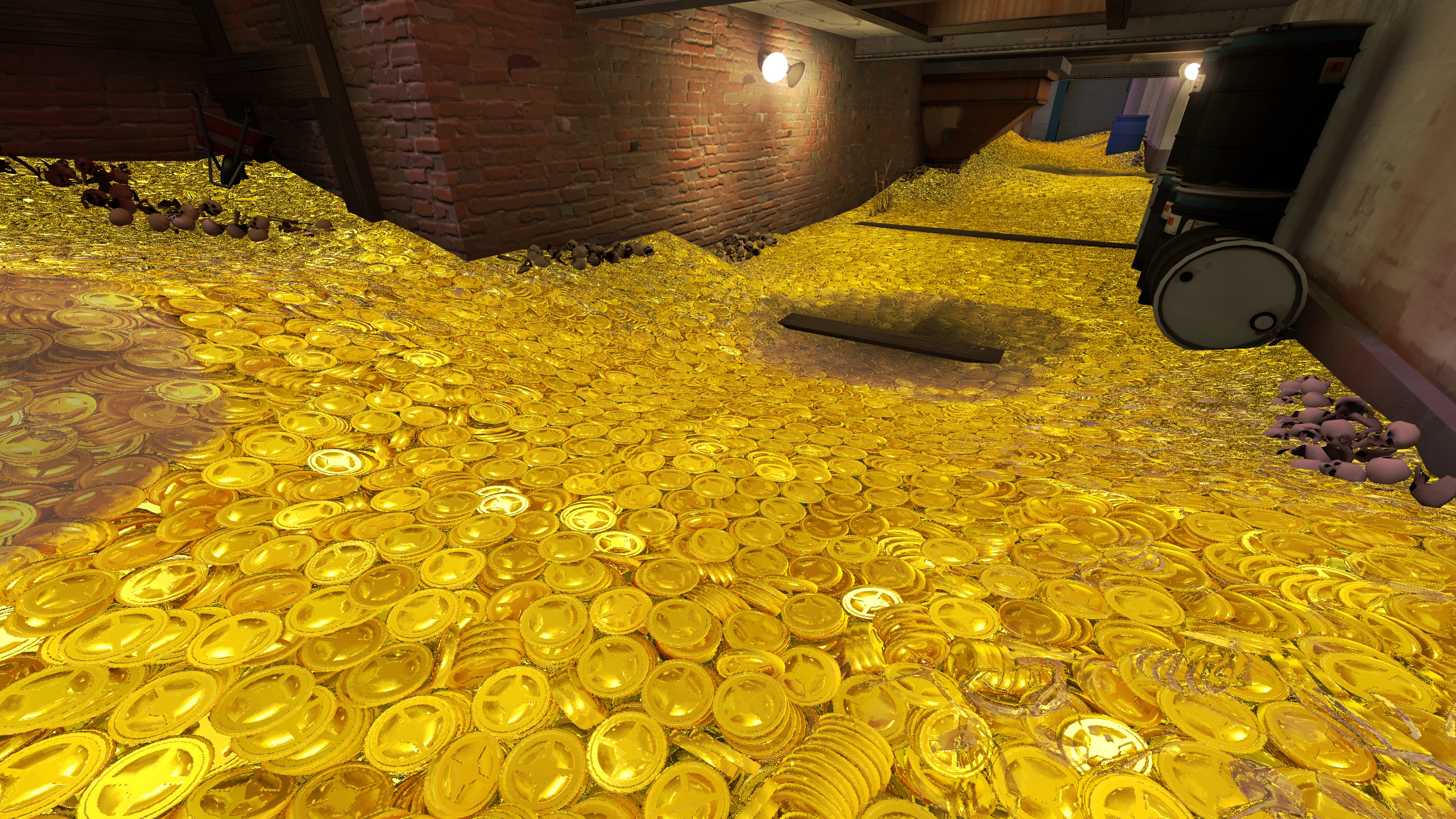Texture [Request]Golden Coins.
- Thread starter chemelia
- Start date
You are using an out of date browser. It may not display this or other websites correctly.
You should upgrade or use an alternative browser.
You should upgrade or use an alternative browser.
So, you're clearly a wizard with normal maps, but I'm noticing one major thing missing from your finished texture, which is ambient occlusion. Your second sample had these really conspicuous shadows, and while they were a bit excessive — and directional, which is a bad idea — your finished version probably should have retained them in some form. A couple things to keep in mind:
1. You want your shadows to get "deeper" the further down they're cast. Observe:
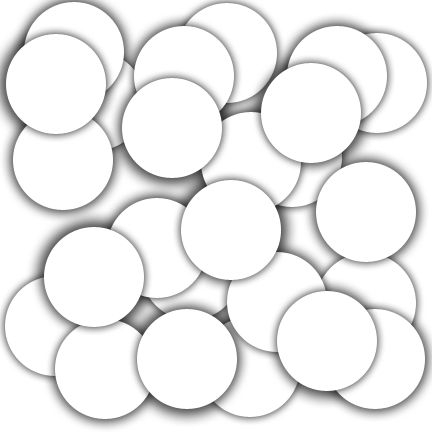
And here's one where I've color-coded the layers for convenience (you don't want them to actually get darker like this):
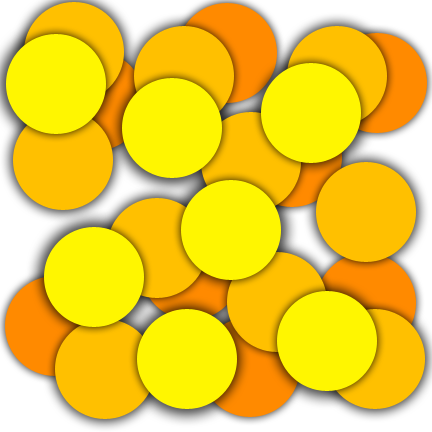
Do you see how the layers cast deeper and deeper shadows on the white background the higher they get? And how the top layer casts a deeper shadow on the bottom layer than the middle one? That's the effect you should be aiming for. This took some fancy Photoshop action involving masks and converting drop shadows into independent layers, but if your pile of coins consists of discrete layers like this, it should be easy to reproduce. If your base texture is just solid gold, then you can just drop your AO bake on top of that in a multiply layer and be done with it.
2. You'll need a specmap to make the effect really work on a shiny surface.
I haven't done a lot of work with specmaps, but from what I understand you'll want it to be very similar to the AO bake, but with even darker shadows with more spread. The idea is to pretty much avoid any light reflecting off the visible shadows, or the shadows will look as painted-on as they are. I think by the fourth or fifth layer, if you have one, you should have virtually no reflections at all.
1. You want your shadows to get "deeper" the further down they're cast. Observe:

And here's one where I've color-coded the layers for convenience (you don't want them to actually get darker like this):

Do you see how the layers cast deeper and deeper shadows on the white background the higher they get? And how the top layer casts a deeper shadow on the bottom layer than the middle one? That's the effect you should be aiming for. This took some fancy Photoshop action involving masks and converting drop shadows into independent layers, but if your pile of coins consists of discrete layers like this, it should be easy to reproduce. If your base texture is just solid gold, then you can just drop your AO bake on top of that in a multiply layer and be done with it.
2. You'll need a specmap to make the effect really work on a shiny surface.
I haven't done a lot of work with specmaps, but from what I understand you'll want it to be very similar to the AO bake, but with even darker shadows with more spread. The idea is to pretty much avoid any light reflecting off the visible shadows, or the shadows will look as painted-on as they are. I think by the fourth or fifth layer, if you have one, you should have virtually no reflections at all.
Looked like plastic
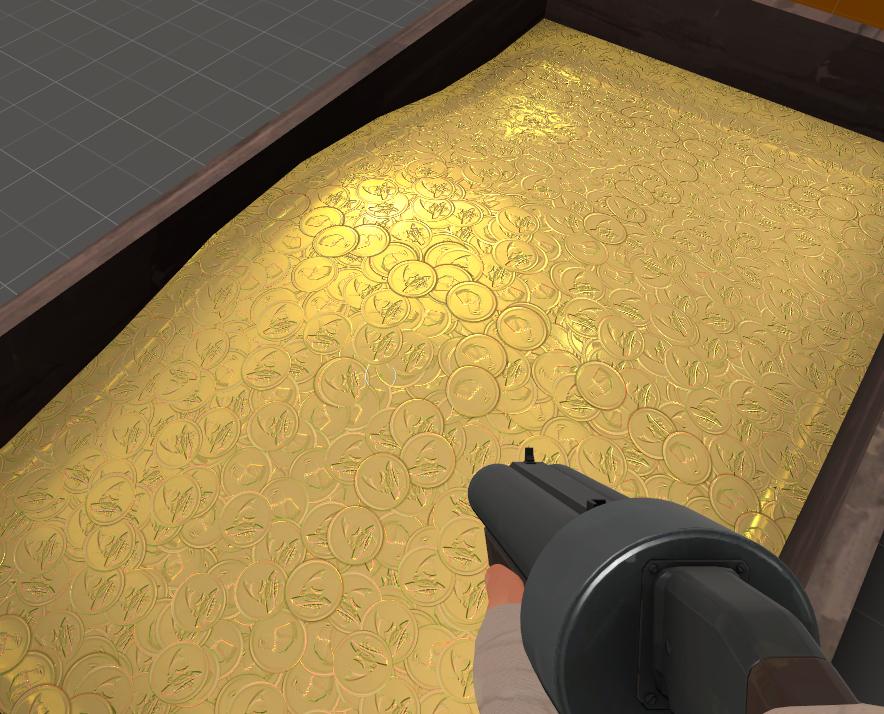
plus a few people said they were "too yellow". The bumpmap of the coin surface was unchanged, though.
The issue is that with that you need coin objects with it too.
Ok i've given it a shot, files can all be found here:
https://dl.dropboxusercontent.com/u/7709653/tf2-items/coinpile.zip
now there is the images below in tga form... and maybe jpg too. Also a FBX of the coin pile I made.
If you look closely you can see that there is some coin clipping going on along the middle axis's of the render. If someone wanted to meticulously pick those out, you could easily re-render a 'perfect' set of textures. There is a 2nd FBX in there that is the plane model you would use to render to, if you did this.
If you download xNormal and pop those FBX's into the proper slots and it render, you'll find it makes the exact images below. There is no hand texturing going on. It's all rendering.
It's also possible that it's 'good enough' as is as well... Personally I'd try to use the australium envmask as the diffuse and feed it the normals and you should be good to go. I haven't tested these in game in any way, so it might all suck too.
Cheers

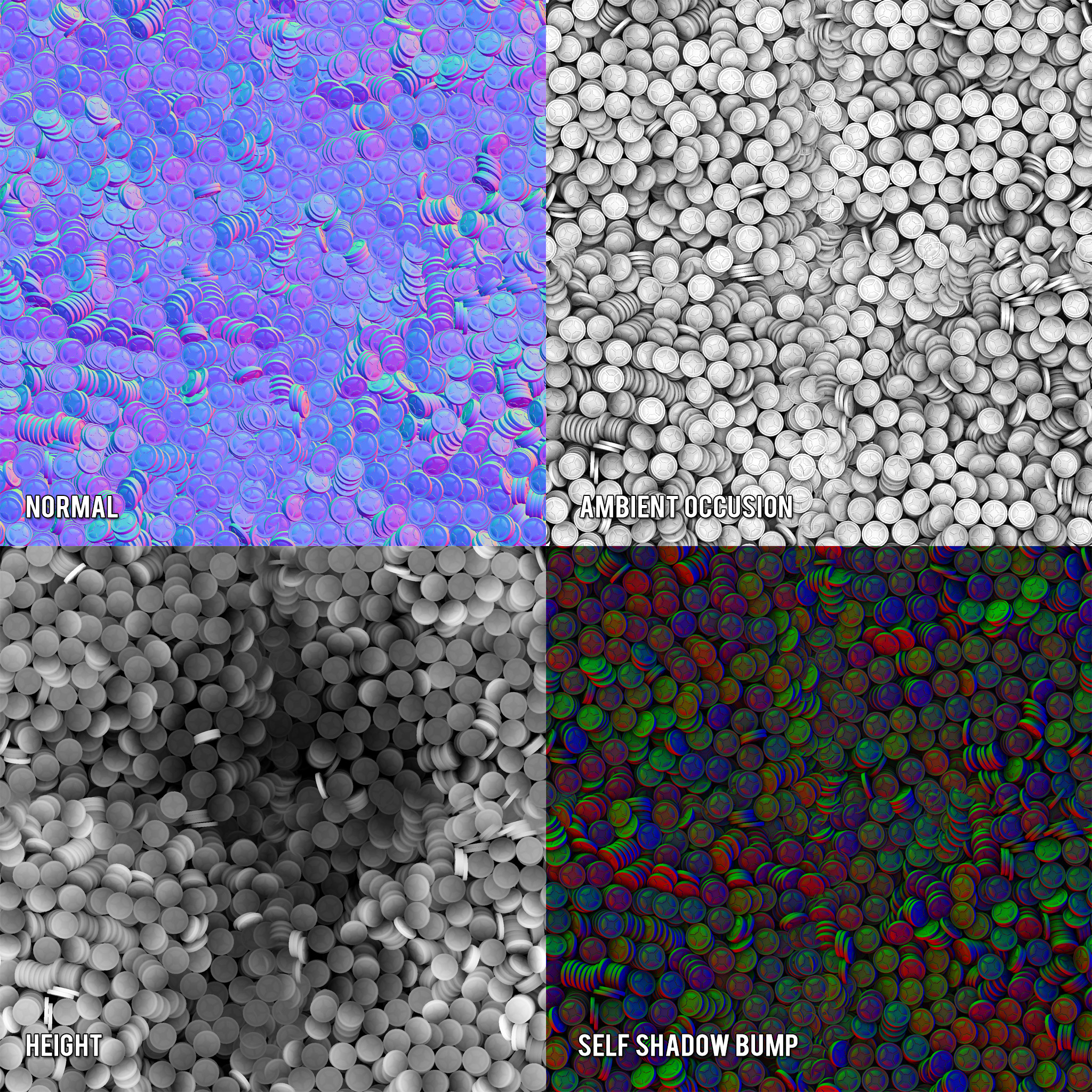
https://dl.dropboxusercontent.com/u/7709653/tf2-items/coinpile.zip
now there is the images below in tga form... and maybe jpg too. Also a FBX of the coin pile I made.
If you look closely you can see that there is some coin clipping going on along the middle axis's of the render. If someone wanted to meticulously pick those out, you could easily re-render a 'perfect' set of textures. There is a 2nd FBX in there that is the plane model you would use to render to, if you did this.
If you download xNormal and pop those FBX's into the proper slots and it render, you'll find it makes the exact images below. There is no hand texturing going on. It's all rendering.
It's also possible that it's 'good enough' as is as well... Personally I'd try to use the australium envmask as the diffuse and feed it the normals and you should be good to go. I haven't tested these in game in any way, so it might all suck too.
Cheers


The clipping does seem pretty horrible. If you are gonna update it, can you split up the files? I can't afford to download 120 MB for some model file that I'm not even interested in. Thankfully Seba helped me with that.
Anyways, I'm trying to get the files to be usualy for TF2. Gonna post what I get.
Anyways, I'm trying to get the files to be usualy for TF2. Gonna post what I get.
The way that the pile of coins is made is to make one pile of coins then copy it to the 4 corners of a square. The piles need to be big enough to touch each other from these spots. The coins that are in the square are now forming a tiled texture. But if you have a lot of items and the individual piles have an irregular footprint then you can get some clipping. The coins are about the worse case for this.
This is why i included all the materials i used to make what i have so far. It does need clean up, i mentioned that when i posted this. I also don't have the time to spend a few days working on this at the moment. if someone wants to help out, they can. if not, i might or might now get back to this and clean it up for ya.
here's my suggestion: the clipping is only on the middle stripes... do an offset in photoshop with each of the textures. the clipping will be on the edges and you'll have a nice clean center that you can use on your treasure box. the clipping areas might not even be seen.
This is why i included all the materials i used to make what i have so far. It does need clean up, i mentioned that when i posted this. I also don't have the time to spend a few days working on this at the moment. if someone wants to help out, they can. if not, i might or might now get back to this and clean it up for ya.
here's my suggestion: the clipping is only on the middle stripes... do an offset in photoshop with each of the textures. the clipping will be on the edges and you'll have a nice clean center that you can use on your treasure box. the clipping areas might not even be seen.
Oh I just saw you wanted a splat of coins too... Here's a splat... you can photoshop that around to whatever you would need i hope. The diffuse's alpha can be used as a mask for the decal.
Splat of Golden Coins!
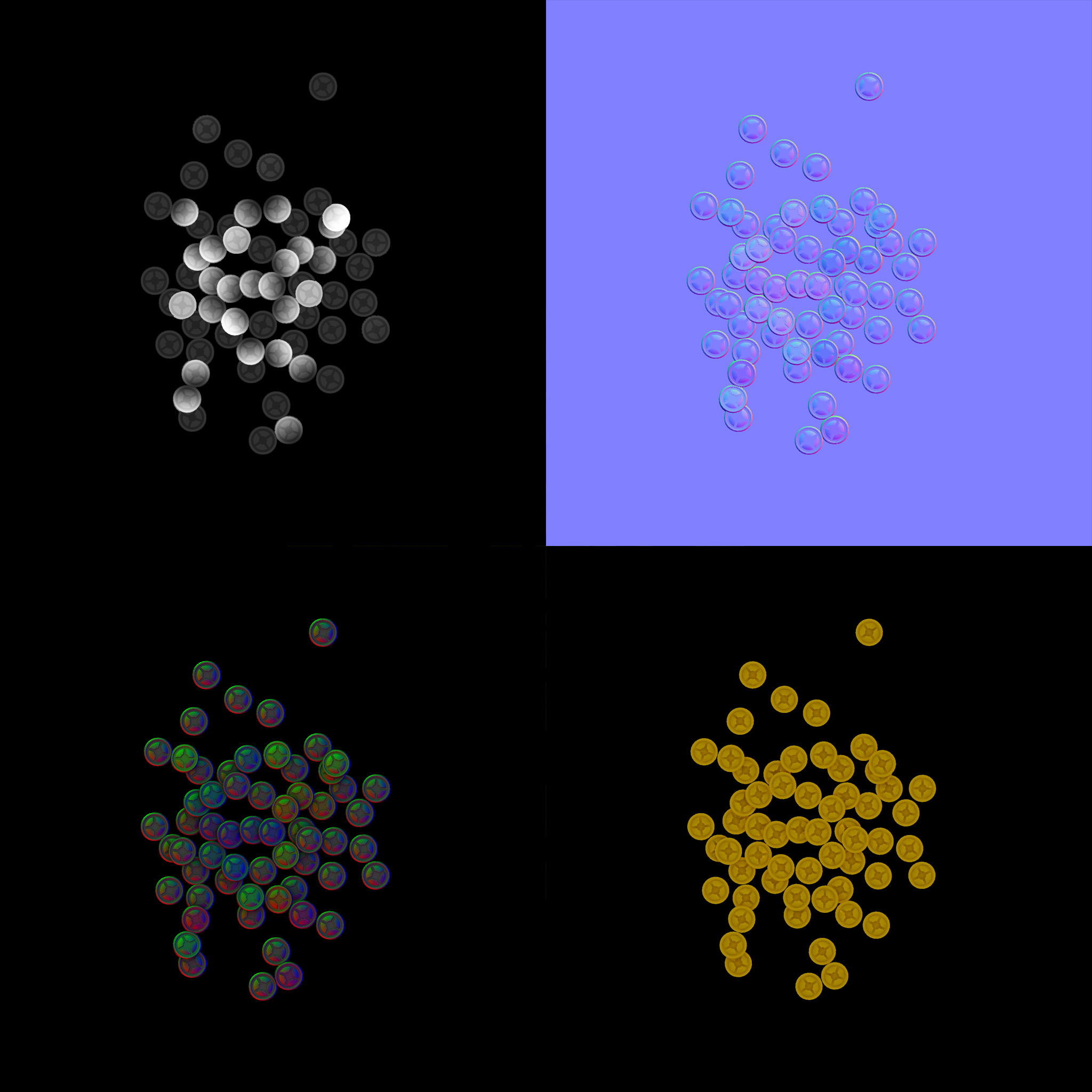
Splat of Golden Coins!




